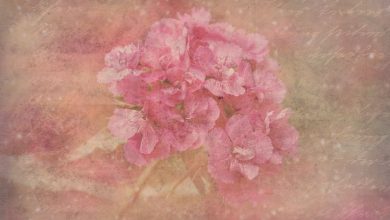War Photographer by Carol Ann Duffy is a brief-yet-insightful poem that provides a touching perspective into the agonies of war, internal struggle, ethics, trauma and ignorance. Published by Carol Ann Duffy in 1985, War Photographer is a poem written in third-person. It depicts a photographer who has returned to his hometown to develop his photographs, all of which were taken at a warzone. Duffy captures it beautifully through the process of developing photos, rather than that of taking them. This adds to the emotion of the piece -in the dark room, the photographer is not required to remain as rational as he was on the battlefield. He lets his feelings sink in, even if it is just for a moment, and we are hence able to witness his internal struggle between professionalism and empathy. It also allows a calmer, less adrenaline-filled view on the topic of ethics in war photography, as compared to if the narrative had been during the war. The poem flows effortlessly, from the setting of context to the pain of war, to the traumatic memories and finally to the unfortunate ignorance of the public, encompassing a broad range of themes within four simple stanzas. Duffy’s distinct writing style aids this- she uses similes, metaphors, and imagery. She also inserts anticipation-inducing phrases at the start of her stanzas, which induce a sense of tense curiosity in her readers.
War Photographer | Summary
The poem starts with the photographer– referred to as ‘he’ throughout the text- alone in a dark room, with his yet-to-be-developed photographs set in front of him in orderly rows. One must keep note of the idea of namelessness and anonymity war had brought to the photographer concerned. There is no other light besides a soft red glow, which makes the photographer feel as though he is attending a Mass at church. The names of warzones cross his mind, making him think that in the end, everyone who dies returns to the same soil.
In the next stanza, we see that the photographer has a task at hand- developing his film. He holds a tray of solution in his hands- oddly enough, his hands, which did not tremble while taking the pictures at the warzone, tremble now. We learn that he is in Rural England, his hometown- a place where his suffering is minimal and his mood can be improved by simply the weather, where there are no bomb blasts and explosions within the sprawling fields, and where no children run in panic in an attempt to flee the scene of war,
A stranger’s features start appearing faintly, still translucent as the film continues to develop. When the photographer sees the man’s face, he remembers the moment he took the photo– the way the man’s wife cried, the way he wordlessly and quickly sought approval before taking the photo, and the way the man bled to death on foreign ground.
As the photos- hundreds of them- continue to develop in black-and-white, the photographer thinks of them as agonies. He knows that the editor of the magazine will pick only a few to publish in the Sunday supplement, and that the readers will shake their heads with tears in their eyes, momentarily emotional in the late morning. As the photographer sits in the airplane, staring out the window and down at the warzones where he had taken so many photos, he knows that none of them truly care about where the images came from.
War Photographer | Analysis
War Photographer | Analysis, Stanza 1
In his dark room he is finally alone
with spools of suffering set out in ordered rows.
The only light is red and softly glows,
as though this were a church and he
a priest preparing to intone a Mass.
Belfast. Beirut. Phnom Penh. All flesh is grass.
In the first stanza, the rows of film are described as “spools of suffering” which is the first hint of the nature of the photos. The photographer is left anonymous, which may hint at the distance between him and the true cruelties of war. After all, he is able to leave when he wants to, not having to endure the same pain as those within the war. He is, at the same time, not completely ignorant to its horrors as the rest of the public, who have never witnessed it first-hand. He lies midway, an outsider in both worlds– this element is emphasized by his namelessness in the poem. When he likens the soft red glow of light to the Mass at church, he imagines the words, “Belfast. Beirut. Phnom Penh.”, all of which are badly hit warzones. The line “All flesh is grass.” refers to the way war often ends with death. The body decays and joins the soil, everyone enters the earth once more.
War Photographer | Analysis, Stanza 2
He has a job to do. Solutions slop in trays
beneath his hands, which did not tremble then
though seem to now. Rural England. Home again
to ordinary pain which simple weather can dispel,
to fields which don’t explode beneath the feet
of running children in a nightmare heat.
The suddenness of the line “He has a job to do.” is an example of Duffy’s anticipation-inducing inserts. It jolts the readers from hazy imagination to reality, and this abrupt transition is symbolic of the emotional switch the photographer must exhibit during his job- between sadness and empathy for those wounded in war, and responsibility and focus on his task. However, the fact that “his hands, which did not tremble then though seem to now” shows that he is not quite able to shake off the intensity of his thoughts and memories. While he remained calm on the scene of the war, the recollection of the moments causes him to shake. This also hints at him being nervous to see the fully-developed photos, possibly afraid of reliving those moments. Duffy also employs the juxtaposition of the bomb-blasted warzones versus the serenity of Rural England. This provides an illustrious imagery of just how different life on the warfield is, and ties into the previous point of the photographer being able to escape the reality of war, unlike those who die there. The “ordinary pain which simple weather can dispel” describes just how normal life in Rural England is, where one’s suffering halts just because of pleasant weather. The “nightmare heat.” in the last line is the heat from the fire caused by the explosions.
War Photographer | Analysis, Stanza 3
Something is happening. A stranger’s features
faintly start to twist before his eyes,
a half-formed ghost. He remembers the cries
of this man’s wife, how he sought approval
without words to do what someone must
and how the blood stained into foreign dust.
“Something is happening” is another phrase employed to stir anxiousness and tenseness in the readers, leaving them in suspense. The photographer calls the stranger’s appearing features a “half-formed ghost” which implies that the photo is still translucent and developing- the word “ghost” also emphasises the eerie nature of the photographs. It is important to note that the man in the image is simply called “stranger”, for the photographer does not know his name– he is just one of the many who died on that foreign ground. This is an almost sad realisation, as life is a precious thing. Yet while documenting it’s cruel end, there was not even enough time or means in the terrible situation for the photographer to learn the name of the dying man in his own photograph. It represents the fleeting nature of life, especially in war. Lives slip away in the blink of an eye, too many people to name.
The photographer remembers three things most clearly from that moment: “remembers the criesof this man’s wife, how he sought approval without words to do what someone must and how the blood stained into foreign dust.” The cries of the man’s wife portray the agony of the ones being left behind– the families who lost loved ones and watch them pass right before them, while the photographer’s seeking of approval before taking the photo portrays the internal conflict of war photography ethics. The ethical side will ask, is it morally right to take pictures of someone’s gruesome last moments, and of their family’s grief? Is it right to use the images to earn money and print in magazines for the country to see? While the professional side may argue that it is simply part of the job, that permission has been received. And the final part about the man’s blood staining foreign ground highlights the way he was not even able to die in the warmth and comfort of his own country– he will become one with the soil of a foreign country, instead.
War Photographer | Analysis, Stanza 4
A hundred agonies in black and white
from which his editor will pick out five or six
for Sunday’s supplement. The reader’s eyeballs prick
with tears between the bath and pre-lunch beers.
From the aeroplane he stares impassively at where
he earns his living and they do not care.
“A hundred agonies in black and white” represents the various traumatic photos that the photographer has captured. The use of the word ‘agonies’ suggests that despite maintaining his professionalism, that tinge of sadness will always remain– the pain of seeing such ruthlessness may be ignored while working, but cannot be forgotten. It is then mentioned that the editor will “pick out five or six for Sunday’s supplement.” After all, these photos are for publishing. But after reading the previous three stanzas, it creates a disturbing feeling, realising that out of hundreds of heartbreaking, cruel tragedies, the editor will simply pick a few and discard the rest as though they do not matter. He will likely choose the most ‘aesthetic’ ones which fit the magazine, or the most horrifying ones which are certain to draw attention. There is a sense of discomfort at how people’s suffering and torture is used for commercialism.
When the magazine is published, “The reader’s eyeballs prick with tears between the bath and pre-lunch beers.” The important point here is the specified timestamp. “Between the bath and the pre-lunch beers” suggests that it is around late morning that they will see the photos. They will feel emotional for a brief moment while reading, and will move on as soon as they put the magazine down. This is a privilege that does not exist for those trapped in war- similar to the comparison between Rural England and warzones. The readers have the luxury of seeing and forgetting, feeling momentary sympathy and nothing more.
The last line of the poem shows the photographer: “from the aeroplane he stares impassively at where he earns his living and they do not care.” He is flying somewhere, likely the next location for his job, another warzone to take pictures at. As he looks down at the warzones, the use of the word “impassive” represents the necessary switch between emotional and professional. While he spent quite a lot of time feeling upset, he realises as he sees the warzones again that he will soon need to return to his goal-oriented self. His lack of emotion portrays the way he steels himself for what is to come. The ending of the poem- “they do not care” – refers to both his editors and the public who read the magazines and see the photos. Their consumption is merely entertainment for them. They are ignorant to the brutality of the warzones, the internal struggle of the job. They do not think about the families of the people they see in the pictures, or wonder what is going on now in the warzones. It does not matter to them, because they are removed from the situation. They view the photos and shake their heads in sympathy, and calmly move on with their own lives.



